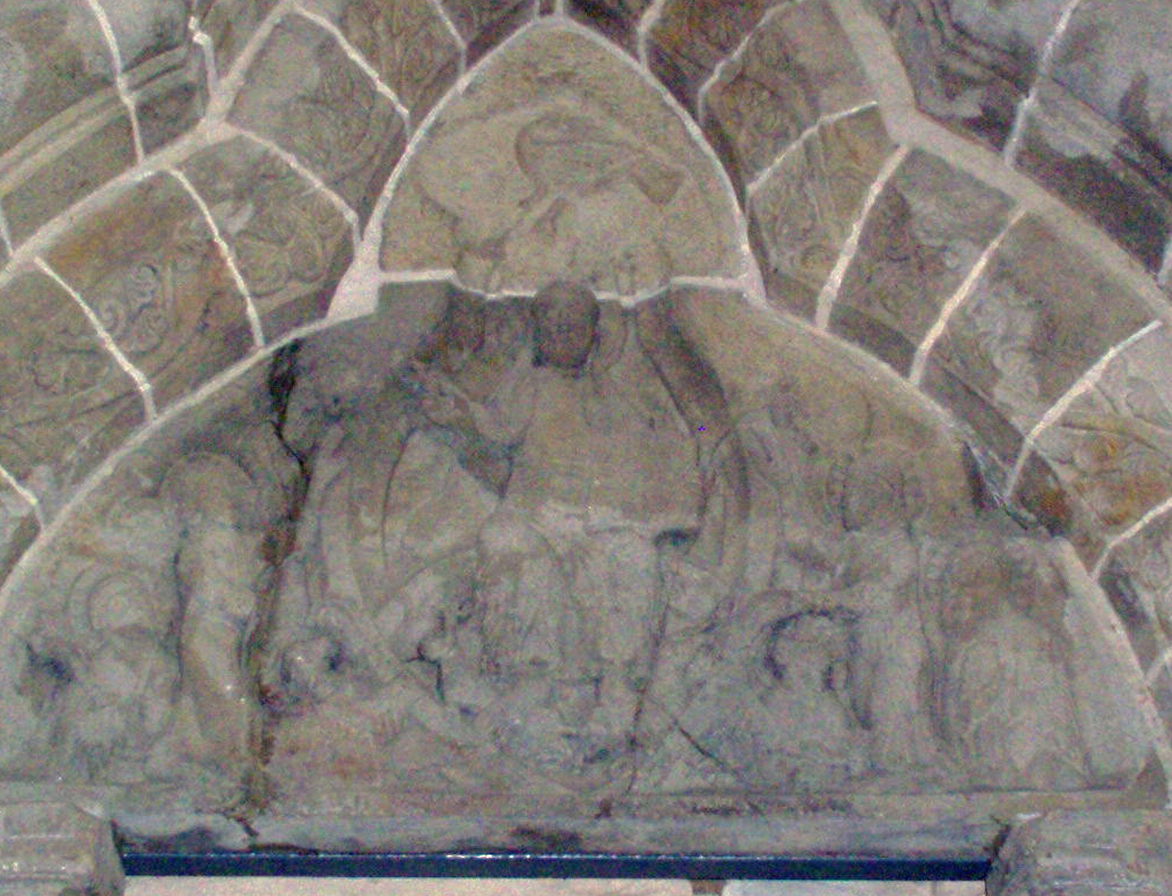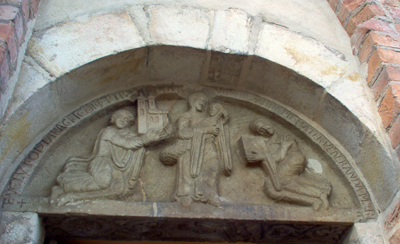
Strzelno Tympanum - A Detailed Description
Dr. Joanna Szczesna, Catholic University of Lublin, Poland
The tympanum of the northern portal was discovered in 1953, and it is preserved in situ. It is dated c. 1216. Formally, it is distinguished by its trifoliate shape. The nature of the representation on the northern tympanum in Strzelno and its formal richness idealy fulfill the representative function befitting the portal of the main entrance to the church.

A caption such as “a theological treaty forged in stone” put the monument in direct opposition to the foundation tympanum, which accentuated a more feudal subject matter (image below).

The bas–relief represents Christ in the mandorla sitting on the rainbow, with a dove of the Holy Spirit over His head and the lion and the dragon under His feet. Two Angels, two symbols of the Evangelists and two Apostles surround Him.
The tympanum of the northern portal in Strzelno is extraordinary with respect to its iconographic content. It is not a representative of the pure Maiestas Domini type understood as a representation of Christ in mandorla surrounded by the effigies of four Living Creatures. For its iconography the most important is the representation of two animal–headed symbols of the Evangelists – Mark and Luke and two Apostles – Peter and Paul. These pairs have been connected since the 2nd century, when the Christian writer Irenaus of Lyons described their relationship and connection in the treatise “Adversus Haereses” (Marcus discipulus et interpres Petri, et ipse que a Petro annuntiata erant per scripta nobis tradidit. Et Lucas autem secator Pauli guod ab illo praedicabatur Evangelium in libro condidit). At the same time, according to Irenaus, these Evangelists symbolize the Kingship (Mark – Lion) and the Ministry (Luke – Ox) of Christ.
The act of trampling on the lion and the dragon, which
we can assume are symbols of Satan and Antichrist sometimes present in the
representations of enthroned Christ, point out His authority over these
evil powers. The representation was
inspired by the words from verse 13 of the messianic psalm 91 (90): Super
aspidem et basiliscum ambulabis et conculcabis leonem et draconem, which
mentiones four beasts. The symbolism
of treading over beasts was thus already present in the Old Testament and it is
there where the names of those animals as related to Satan appear. In
this context they are referred to by
The bird over Christ’s head interpreted as a dove of the Holy Spirit may refer to the patrocinium of the Church or shows the highest majesty of Christ by the permanent presence of the Holy Spirit.
In a broader ecclesiastical and political context,
this representation refers to the role of the Premonstratensians Order in
introducing Church reform in